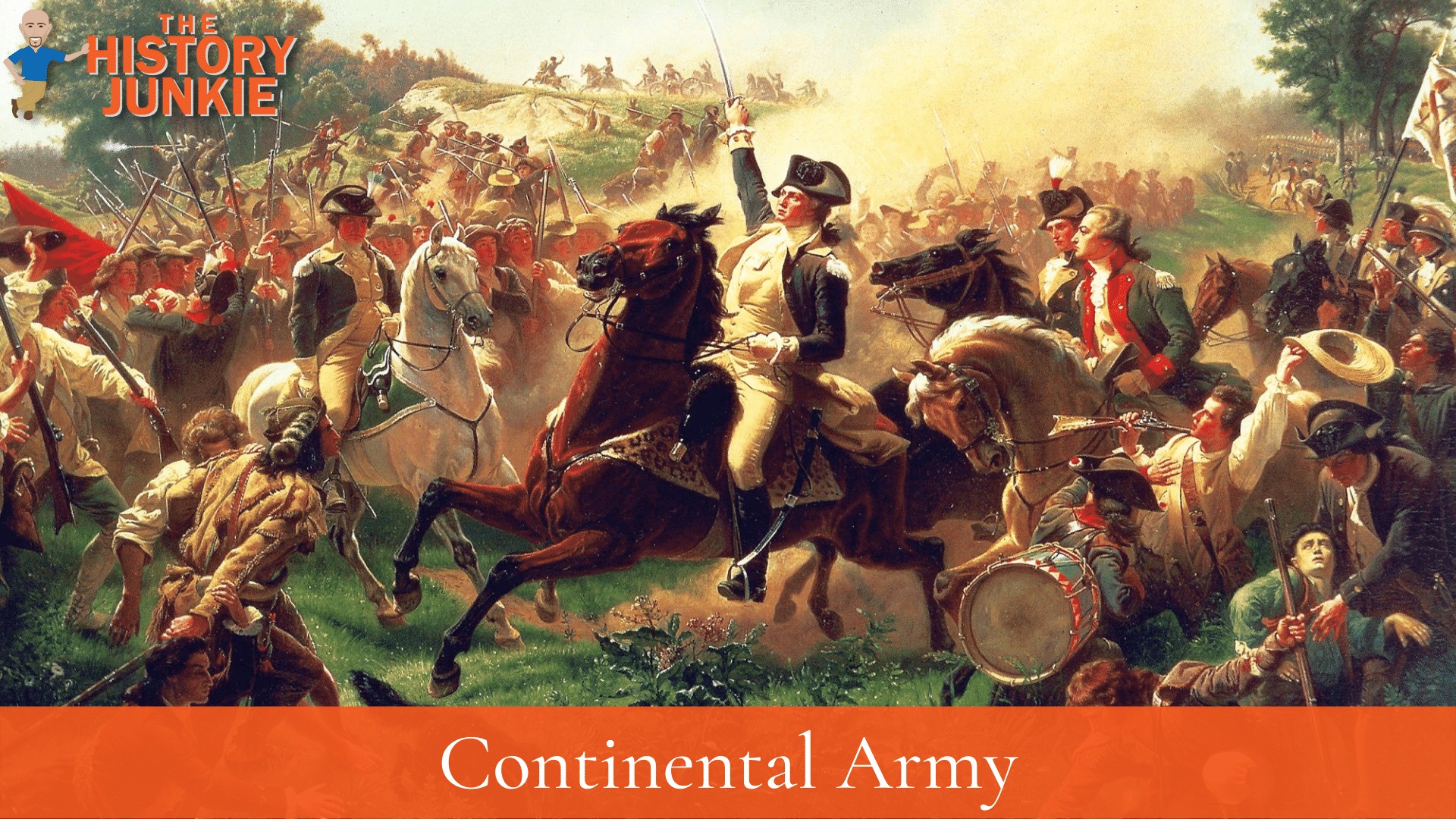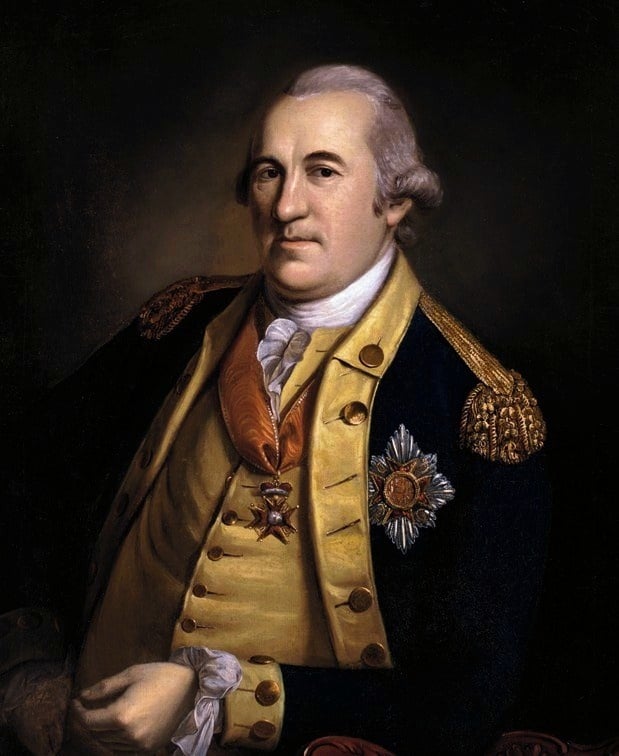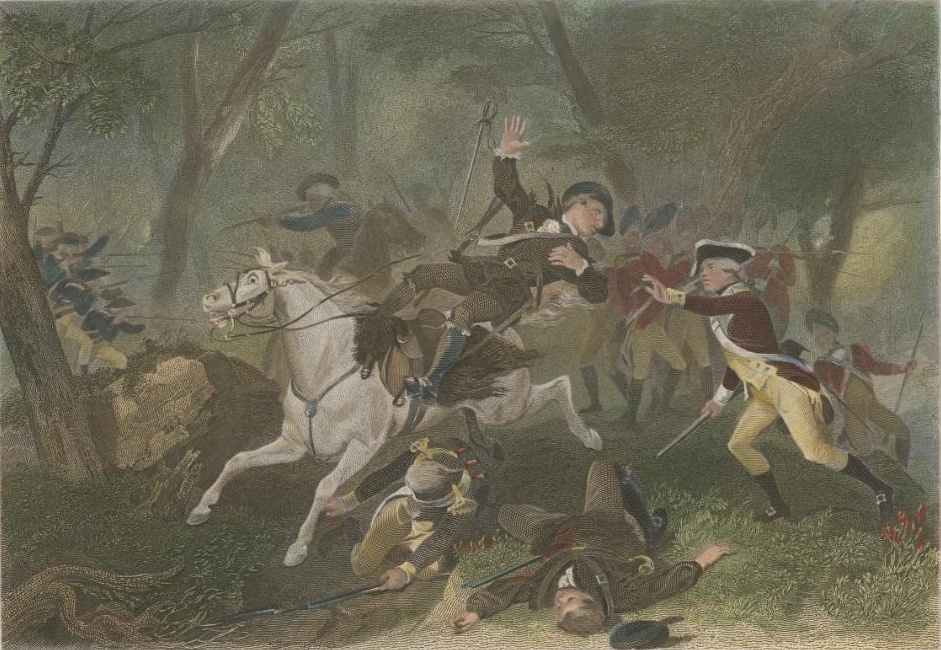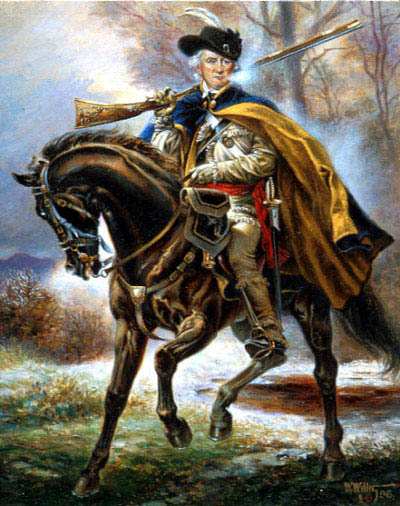The Continental Army saw its beginnings in the Battles of Lexington and Concord. The British forces under Thomas Gage were driven back to Boston and were immediately put under siege.

This siege of Boston led to the removal of Thomas Gage and the promotion of Sir William Howe. Once in command, Howe organized an assault on Breed's Hill that resulted in a large number of casualties. Although the British forces took the field at the Battle of Bunker Hill, they did not break the siege.
Lexington and Concord, Bunker Hill, and Ticonderoga were actions taken by the provincial militia and not an organized action taken by a Continental Army. Nevertheless, the Continental Army was already being discussed within the Continental Congress.
The discussion ended with John Adams nominating George Washington as the commander-in-chief of the Continental Army of the United States.
The Organization of the Army
The Continental Army was the predecessor to the United States Army. However, it was not well organized. When George Washington took control of the newly formed army in 1775, he inherited a collection of local militias. Throughout the entire war, he strived to create a regular army that would "look the British in the eye."

His efforts were realized during the winter encampment at Valley Forge when a Prussian drillmaster, Baron Von Steuben, educated the Continental regulars in European warfare.
While the guerrilla tactics never faded and the local militias played an important role throughout the war, this training did give rise to a formidable army that could stand up to the British in the field.
The organization of the army was a process and endured reforms throughout the conflict:
- Initially, General Washington organized the gaggle of New England militia into three divisions, six brigades, and thirty-eight regiments. Divisions can range anywhere from 10,000 - 30,000 men.
- After the crisis of 1775, when enlistments ran up, the Continental Congress instituted a 3-year contract rather than a term of six months or a year.
- The Continental Army was mostly made up of men who were poor and even criminals. While there were some affluent privates, most landowners who worked the land could not afford to leave their homes and crops unattended for military campaigns. These men would often serve in the militia and not the regular army.
- The Continental Congress paid the average soldier in the continental dollar currency. The continental dollar suffered from hyperinflation, which caused it to be devalued greatly. Congress also paid each man who joined a bounty.
The Militia
The militia had begun the war and had successfully repelled the British at Concord and inflicted heavy casualties on Howe's redcoats at Bunker Hill.
However, they would become a point of frustration for many of the commanders of the Continental Army. George Washington viewed the militia as worthless in a traditional battle and believed them to be useful only in skirmishes. Nathanael Greene shared the same frustration.
The backbone of the Continental Army was its militia, but there were many causes for concern:
- The militia could not fight a traditional European war. When faced with British regulars in open fields, they would flee the field without even firing a shot. Examples of this can be seen at Kip's Bay, White Plains, Camden, and Guilford Courthouse.
- Each town had its own militia with its own leader, who was often elected by those serving. This caused problems in the pecking order, and many would struggle to take orders from a commander-in-chief.
- They were untrained in traditional army behavior. They often practiced bad hygiene, which led to the spread of disease.
- The militia had varying terms of service, which tended to force commanders into battles in which they were unprepared.
The militia was not always a liability. In the battles of Lexington and Concord, Bunker Hill, Bennington, King's Mountain, and Cowpens, the militia fought well and inflicted high casualties on the British regulars.

With the exception of Cowpens, each of these battles shared a common theme in that the militia did not engage the British on open ground but rather fought behind redoubts or trees.
When the militia was given proper cover and allowed to engage in guerrilla tactics, the British were put at a disadvantage in the case of King's Mountain and Cowpens.
Daniel Morgan understood the proper way to use militia by dangling the carrot on a stick and causing Colonel Tarleton to charge into a bear trap.
The Regulars
As stated previously, the regulars were made up of the lower class of society. This included the poor and criminals. The word criminals can be a bit of an overstatement when compared to the modern use of the word.
While there were certain men who had little character in both armies, most of the criminals were criminals due to their finances.
The Continental Regulars would become the army that General Washington wanted at the beginning of the war. Washington longed for men who would meet the British in the field and not run from battle.
He would begin training this regular army at Valley Forge, and they would enter their first test at the Battle of Monmouth, in which they took the field from the British.
They would also play a key role in the southern campaign of Nathanael Greene and during the Siege of Yorktown. They also helped keep General Clinton occupied in the north.
The Continental Regulars were different from the militia in that they entered into longer contracts and learned European warfare. The organization would lay the foundation for the modern United States Army.
The Officers
One of the constant problems during the American Revolutionary War was the ability of the Continental Congress to select capable leaders. Men such as Horatio Gates, Charles Lee, and Benjamin Lincoln were given promotions over much better officers.
These promotions were given due to their affluence and notoriety rather than their ability. Men such as Nathanael Greene, Daniel Morgan, Francis Marion, and Benedict Arnold were overlooked. This would ultimately lead to Arnold's treason and Morgan's resignation after Saratoga.
George Washington was also criticized by many of his peers. Men such as Horatio Gates and Charles Lee sought to remove him from his position of Commander-in-chief.
As fortunes would have it, Charles Lee was captured by Banastre Tarleton and then embarrassed at the Battle of Monmouth, that resulted in a court-martial.
Horatio Gates participated in the Conway Cabal that sought to replace Washington as the head of the Army and institute Gates. The cabal was short-lived but carried some notable names from Congress. Gates' military career would also end in disgrace when he fled the battlefield at Camden.
Nathanael Greene and Daniel Morgan are two officers who rose in rank based on merits alone. They did not have a wealthy family, nor did they have the military credentials. Both would prove their worth in the Southern Campaign that would ultimately pin Cornwallis down in Yorktown.

